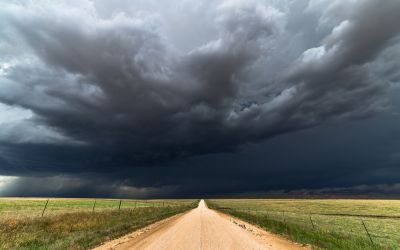Navigating climate-related financial disclosure
National governments are beginning to roll out mandatory climate risk reporting, calling for organizations to disclose their risk exposure, both from the physical impacts of climate change and the transitional risk of moving to a low carbon economy.

What you need to know about mandatory disclosure
On Wednesday, Rishi Sunak announced ambitious plans to “rewire the entire global financial system for net zero” and make Britain the world’s first “net-zero financial centre”. One of the mechanisms for achieving this will be a requirement for most large firms and financial institutions to publish net-zero transition plans.
The UK government has been ramping up new rules around mandatory climate reporting over the last couple of years. New Zealand was the first country to implement mandatory climate reporting legislation, followed by commitments from the G7 nations (Canada, France, Germany, Italy, Japan, the UK and the US), Switzerland, Brazil, Japan and Hong Kong. With mandatory reporting imminent, Cervest breaks down what companies need to know to meet pending disclosure requirements, build resilience and adapt with climate change.
What is climate-related financial disclosure?
Climate-related financial disclosure is the process of making information about companies' climate-related risk publicly available. Going a step further than existing asset-level financial reporting, climate disclosure asks companies to report on specific, asset-level climate risks, taking into account the impacts of future climate change.
Why do we need it?
As Cervest Founder and CEO, Iggy Bassi, says “Climate change is an everybody problem”. It will affect every government, business, supply chain and asset, and has significant consequences for infrastructure, supply chains and the customer bases of economies across the globe. The impacts of climate change are projected to cost trillions of dollars by the end of the century.
One of the most visible consequences of climate change is the increasing intensity and frequency of extreme weather events such as heat waves, flooding, drought, wildfires and tropical storms. In the United States, between January and September 2021 there were eighteen extreme weather events that have cost more than 1 billion dollars each.
Extreme weather events have revealed just how much vulnerability and exposure to climate-related hazards is present across infrastructure and physical assets. In a recent survey, Cervest found that over 50% of businesses have had many, if not all of their physical assets affected by an extreme weather event in the last 5 years.
How will it help us deliver on Climate Action?
As companies discover more about their climate risk in order to fulfil disclosure requirements, they will be able to make better informed decisions to shore up or divest from existing assets, and invest in new opportunities. They will also build a better picture of how they may be contributing to increasing carbon emissions and what they can do to mitigate this. With this increasing level of climate literacy, companies will begin to build climate intelligent networks which will empower us to adapt with climate change on a global scale.
How can organizations get a head start on disclosure?
Although climate related disclosure aims to be immediately adoptable, and enable reporting through existing processes, it is not quite that simple. Accurate climate-related financial risk disclosure requires a much better understanding of the risks and impacts of climate change than many companies have currently.
Get access to Climate Intelligence
To make accurate disclosure on climate risk, companies will have to investigate and quantify how climate change is likely to impact their assets in the coming decades. Data needs to be translated into decision-useful information and actionable insights, something that is not currently possible for many organizations. Encouragingly, Cervest found that 84% of companies are investing in new software and tools to help them tackle this issue and get full visibility of their climate risk.
Build up internal climate literacy
For organizations to become climate intelligent, they will need to increase their in-house Climate Intelligence skills and knowledge through training, development and recruitment. With 82% recruiting new talent to help implement their climate disclosure strategy, decision makers understand that there is a knowledge gap that must be urgently filled.
Get to grips with climate scenarios
Due to our changing climate and the multiple actions governments and businesses may take to mitigate against climate change, assessing the potential impacts of climate change on physical assets in the future involves a level of uncertainty. To get a true picture of climate risk, organizations will need to assess portfolio risk exposure across different potential futures. These are known as climate scenarios, and range from a Paris-Aligned scenario (warming below 2 degrees) to business as usual scenarios where emissions continue unabated.
Keep an eye on trends in policy and regulation
There are several different climate reporting frameworks, but the one that has the most support from policy makers is the Task Force on Climate-related Financial Disclosures (TCFD) framework, which has a specific focus on carbon emissions to give stakeholders visibility on their carbon-related assets.
Climate reporting is relatively new, and policymakers and regulators are still learning about the best ways forward on implementation. Cervest are championing effective and standardized disclosure, allowing for companies to be benchmarked against each other, and so that companies can make decisions based on a single and shareable source of climate data. ‘Mandatory disclosure is inevitable. But mandatory does not mean useful. Real value is only realised by making climate risk disclosure mandatory AND internationally standardized, so that we can compare apples with apples.”
To find out more about this topic, please download Cervest’s ebook - Navigating climate-related financial disclosure.






_400_250_s_c1.png)